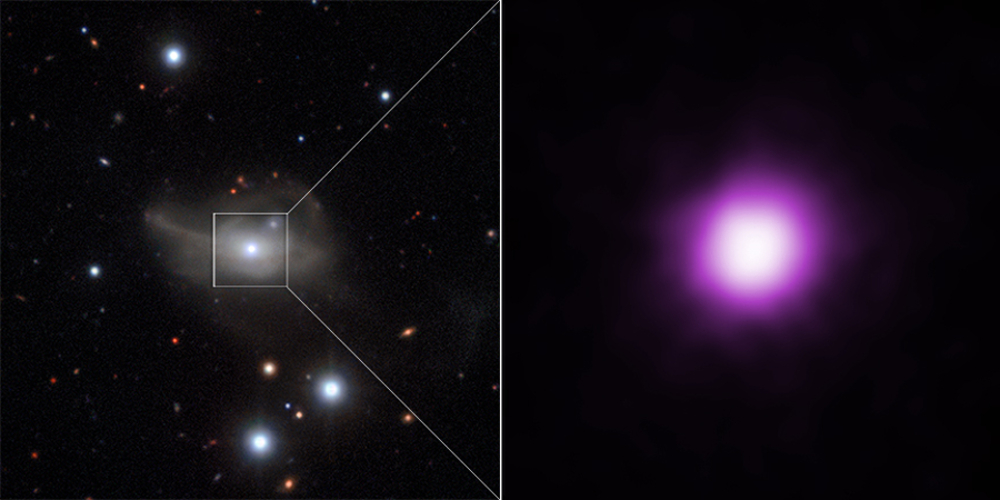
 Credit: X-ray: NASA/CXC/Univ of Sydney/R.McElroy et al, Optical: ESO/CARS Survey
Credit: X-ray: NASA/CXC/Univ of Sydney/R.McElroy et al, Optical: ESO/CARS Survey
Dieting
Black holes gain mass through the process of accretion, in which material near the black hole enters a death spiral and eventually passes through the black hole's event horizon, never to return to our Universe. Before this material enters the event horizon, it revolves faster and faster around the black hole, reaching extremely high temperatures. The hot material near the black hole glows in X-rays, so that X-ray emission is a good indicator of the black hole's diet. The black hole at the center of a galaxy known to astronomers as Markarian 1018 seems to be a rather finicky eater. Observations showed a strange variation in the optical emission from Markarian 1018, which seemed to suggest an unusual increase in the amount of thick material in front of the black hole. To determine the cause of this change, astronomers used a fleet of X-ray observatories, including the Chandra X-ray Observatory, NuStar, and Swift. The X-ray observations measured both the intrinsic emission from the accretion disk, and the amount of absorbing material in front of the black hole. The image above shows, on the left, an optical image of Markarian 1018 from the Very Large Telescope, and on the right, an image of the X-ray emission from the central black hole as seen by the Chandra X-ray Observatory. These X-ray observations showed no large change in absorption in front of the black hole. Instead, these observations indicate that the change in the emission from the black hole is caused by a decrease in the amount of accreting material feeding the black hole. Why this black hole apparently decided to go on a diet at this time is still a puzzle.
Published: November 21, 2016
<
HEA Dictionary ● Archive
● Search HEAPOW
● Other Languages
● HEAPOW on Facebook
● Download all Images
● Education ● HEAD
>

Each week the HEASARC
brings you new, exciting and beautiful images from X-ray and Gamma ray
astronomy. Check back each week and be sure to check out the HEAPOW archive!
Page Author: Dr. Michael F. Corcoran
Last modified Monday, 26-Feb-2024 17:10:54 EST


